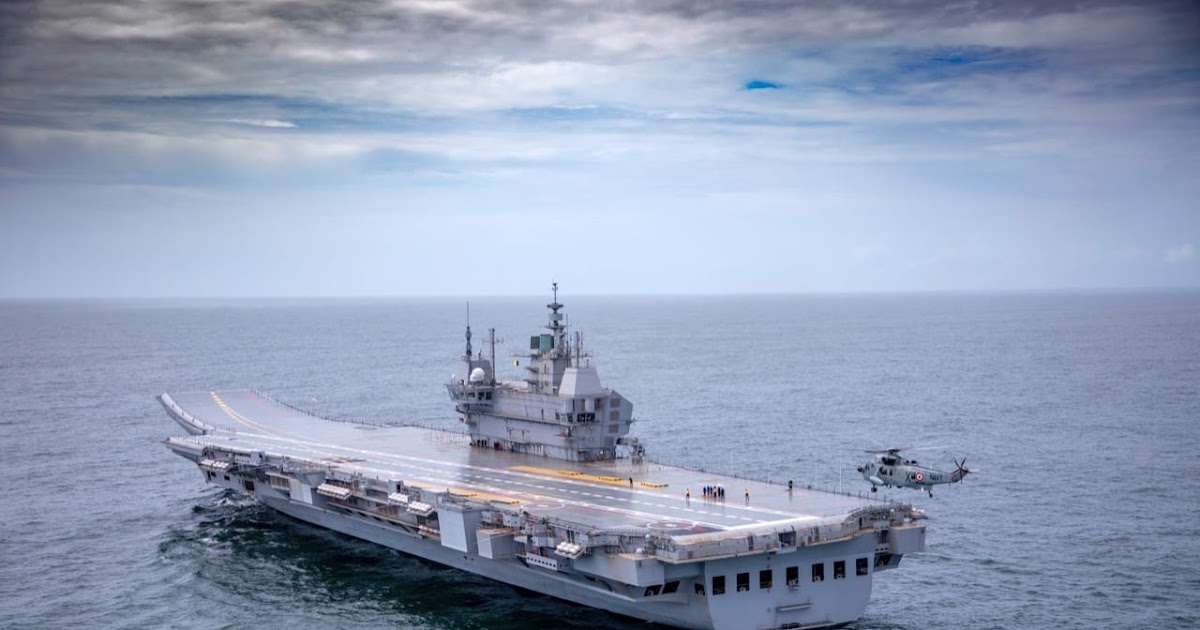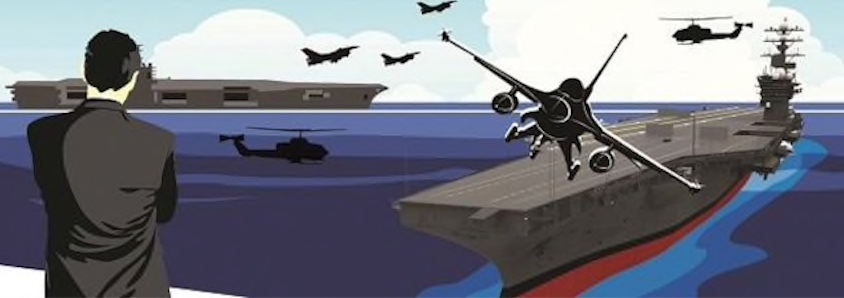
As INS Vikrant (pictured here) joins the navy fleet, there remains a worrying lack of clarity in New Delhi about where it should focus its limited resources
By Vikas Gupta
Defence News of India, 2 September 22
On Friday, when the Indian Navy ship (INS) Vikrant is commissioned into the navy fleet, we will join a group of just five countries that each operate more than one aircraft carrier. In addition to the 44,000 ton INS Vikramaditya, purchased from Russia, we will have the brand new 45,000 ton INS Vikrant. China, Italy and the UK also have two carriers each. The United States (US) Navy – the 900-pound gorilla of aircraft carrier operations – has 11 aircraft carriers, each displacing around 100,000 tons, projecting American power around the world.
While our two carriers might seem like a respectable power projection capability, it would rarely translate into more than a single combat-ready carrier. The US Navy’s Marine Tracker website, which tracks the deployment of major US warships, reveals that as of August 29, only three US Navy carrier battle groups (CSGs) were operationally deployed, less than one quarter of US aircraft carriers. The US Navy also has seven Wasp-class helicopter landing docks (LHDs) – amphibious assault ships that carry F-22 Osprey tiltrotor aircraft, Sea Harriers or vertical take-off and landing fighters F-35 Lightening II (VTOL); and a Marine Expeditionary Unit made up of more than 2,000 combat-ready Marines. Of the seven US LHDs, only four are operationally deployed.
Similarly, the Indian Navy’s two aircraft carriers would mostly represent only one operationally deployed aircraft carrier. To have two aircraft carriers operationally available, the naval fleet must have three aircraft carriers since, most of the time, one of these three would be in the shipyard for maintenance. The Navy projects its requirements for two deployed aircraft carriers in simple terms: one for the east coast (the Bay of Bengal and the Straits of Malacca) and a second for the west coast (the Arabian Sea, the Pakistani coast and the Western Asia). But lately, navy chiefs have begun to advocate for a third aircraft carrier to be deployed to perform power projections at longer ranges in the Indian Ocean Region (IOR). But the operational deployment of three aircraft carriers would require a fleet of four aircraft carriers. Thus, the Navy needs not only a second native aircraft carrier (IAC-2), but also a third (IAC-3), as well as its own aviation group and destroyers, frigates , corvettes, supply ships and submarines required for three carrier battle groups (CBG). Meanwhile, as in most navies, an internal debate rages between supporters of the “control of the sea” of the decisive naval battle, in which aircraft carriers play a decisive role; and proponents of “sea denial” in which scattered battleships and submarines take center stage.

What is certain is that India would need huge financial resources to create such forces. Former US Senator Everett Dirksen, known for his acerbic wit, warned of skyrocketing government spending: “A billion here, a billion there, and soon you’ll be talking real money.” However, aircraft carriers and large warships, like no other weaponry platform, are as useful in times of peace as they are in times of war, serving as a diplomatic tool to show the flag to allies, partners and adversaries. Additionally, the naval forces have an unrivaled capability to deliver Humanitarian Aid and Disaster Relief (HADR), as the Indian Navy did after the 2004 Asian Tsunami, having established an enviable reputation for force capable of reaching the entire coastline of the Indian Ocean in times of peace and in times of war. Air Force a capability that has utility in both peacetime and wartime, a fleet of large capable warships provides the ability to cross an ocean in both peacetime and wartime.
The US Congress has explicitly recognized this. The latest U.S. National Defense Authorization Act (NDAA)—the U.S. federal law that specifies the annual defense budget and expenditures under various titles—has for the first time given the Navy legal and budgetary powers to perform a clear peacetime, as well as its combat, role.
The new American formulation says: “The navy must be organized, trained and equipped to thepromotion in peacetime of the interests of national security and prosperitythe United Statesandrapid and sustained combat incident to operations at sea”. Inserted in bold/italics is new wording which emphasizes peacetime and economic missions. All Marines are on manifest presence display. The new US law continues to recognize the US Navy’s combat role, while allowing it to remain within the four corners of the law while performing a peacetime role as well.
Given India’s putative role as a network security provider in the Indian Ocean region (IOR) and a defender of global commons such as maritime lines of communication (SLOC) that carry 70% of trade in these waters, the Navy is faced with the stark question: what challenges must it overcome to fulfill this role? New Delhi’s regional partners in containing a belligerent China – primarily the United States, Japan, Australia and Singapore – would like the Indian Navy to lock down the IOR, while other partners can focus on deterring the ‘People’s Liberation Army (Navy) or PLA(N) near the First and Second Island Chains in the South China Sea. This would not be easy, given the breathtaking expansion of the PLA(N), with Chinese naval shipyards in Dalian simultaneously constructing four to five large, sophisticated destroyers.
Moreover, the commissioning of a second aircraft carrier, however satisfactory, does little to calm New Delhi’s apprehensions about its 3,488 kilometer Line of Effective Control (LAC), as the land border is called. Chinese-Indian. Due to the PLA’s multiple encroachments on the LAC in the summer of 2020, some of which have yet to be cleared, Beijing has ensured that New Delhi’s strategic attention is fixed on the LAC rather than the ocean. Indian. India’s unstable land border with China, where it won a war in 1962 and continues to enjoy a military advantage, remains India’s main security concern. Meanwhile, the vast ocean expanses of the Indian Ocean, which India can more easily dominate, remain on the fringes of its attention.
India being the only member country of the quadrangle that shares a land border with China, its concern for LAC is not well understood by its partner countries. The United States and Australia have noted that India’s interests in the IOR are greater than in the high Himalayas. New Delhi needs to show resolve, they say, because India’s own economic prosperity depends on keeping its SLOCs open in the Indian Ocean. As the Indian Navy commissions its second aircraft carrier, there remains a worrying lack of clarity in New Delhi about where it should focus its attention and scarce financial resources.






